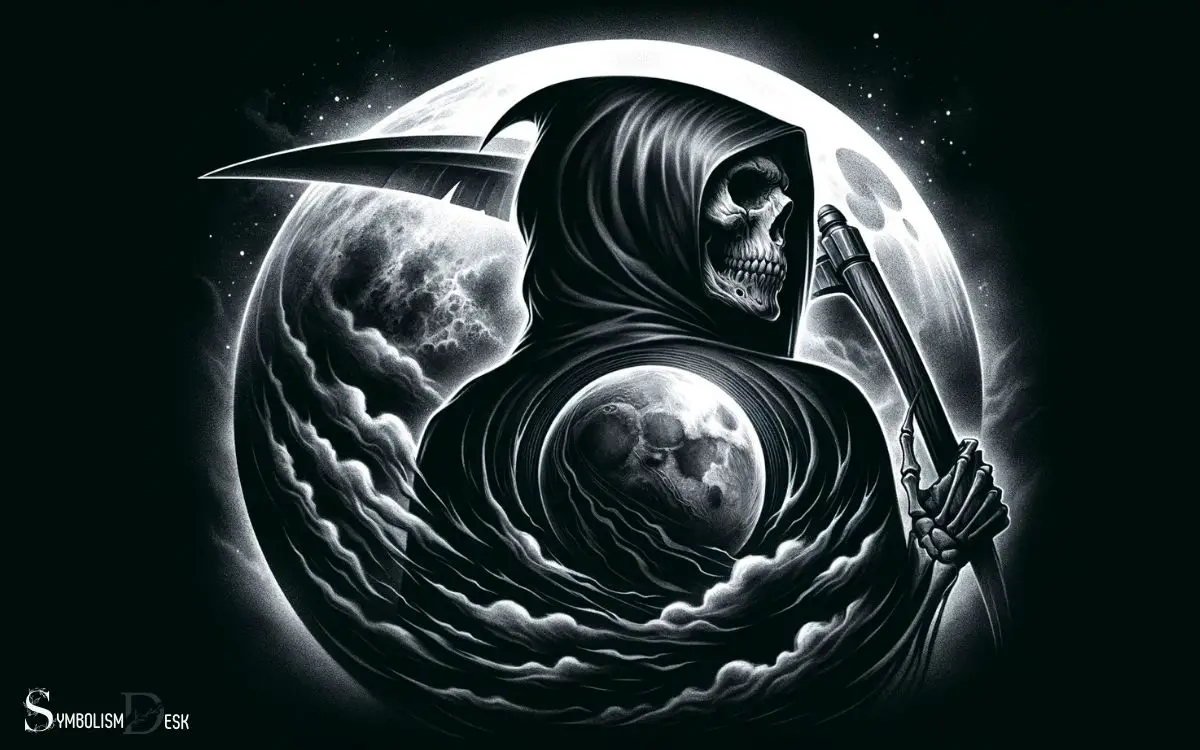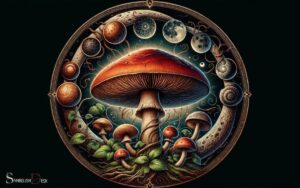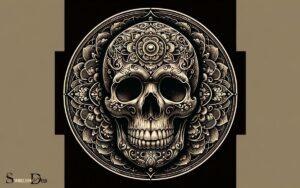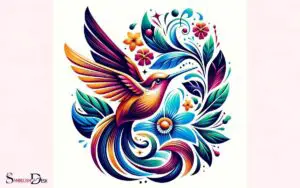What Do Grim Reaper Tattoos Symbolize? Explain!
Grim Reaper tattoos symbolize the acceptance of mortality, the inevitability of death, and in some cases, a reminder to live life to its fullest.
They are a popular choice for those who want to make a bold statement about the transient nature of life or to commemorate the passing of loved ones.
Grim Reaper tattoos often represent:
- An acceptance of the natural cycle of life and death
- A reminder of the impermanence of life and the importance of living meaningfully
- A tribute to those who have passed away
- Sometimes, defiance in the face of death or a symbol of protection from it.
In tattoo artistry, the Grim Reaper can be depicted in various styles, from realistic to cartoonish, and is sometimes combined with other elements such as clocks, scythes, or hourglasses to enhance its meaning.
A Grim Reaper tattoo serves as a compelling visual reminder of life’s fragility and the inexorable march of time.

Key Takeaway
Origins of Grim Reaper Symbolism
The origins of Grim Reaper symbolism can be traced back to medieval Europe’s personification of death. During this time, death was a pervasive aspect of life, with plagues and wars constantly threatening populations.
The Grim Reaper, often depicted as a cloaked figure wielding a scythe, became a powerful symbol of mortality and the inevitable end of life.
In many ways, the Grim Reaper served as a reminder of the fragility of human existence and the concept of fate.
The imagery of the Grim Reaper was also influenced by the Christian concept of judgment and the belief that death was a transition to the afterlife.
Over time, the Grim Reaper has evolved to represent a variety of ideas, including fear, acceptance of mortality, and the cyclical nature of life and death.
Cultural and Historical Significance
The cultural and historical significance of Grim Reaper tattoos encompasses a diverse range of interpretations and influences across different societies.
These tattoos have evolved in meaning over time, reflecting changing attitudes and beliefs surrounding death and the afterlife.
Additionally, historical interpretations and myths have contributed to the ongoing symbolism of the Grim Reaper in tattoo art.
Symbolism in Different Cultures
Different cultures’ interpretations of the Grim Reaper’s symbolism vary widely, reflecting their unique historical and cultural perspectives.
In Western cultures, the Grim Reaper is often associated with death, mortality, and the afterlife. It’s a common symbol in European folklore and art, representing the inevitable end of life.
In contrast, some Eastern cultures view death as a natural part of the cycle of life and may not perceive the Grim Reaper in the same ominous light as Western societies.
For example, in some Asian cultures, death is seen as a transition to another realm rather than an end.
Additionally, in certain African traditions, death is often viewed as a passage to the spirit world, and the Grim Reaper may hold different connotations or be represented in alternative forms.
These varied interpretations highlight the diversity of human perspectives on mortality and the afterlife.
Evolution of Reaper Symbolism
Throughout history, various cultures have depicted the Grim Reaper in diverse forms, reflecting their unique perspectives on death and the afterlife.
The symbolism of the Grim Reaper has evolved over time, influenced by cultural and historical factors.
Below is a table depicting the evolution of Reaper symbolism in different cultures:
| Cultural Influence | Historical Significance | Symbolism |
|---|---|---|
| Ancient Greece | Belief in afterlife | Personification of death and guide to the underworld |
| Medieval Europe | Plague and mortality | Fear of death and inevitability of mortality |
| Mexican folklore | Day of the Dead | Celebration and acceptance of death as a natural part of life |
These cultural and historical perspectives have shaped the symbolism of the Grim Reaper, illustrating how different societies have interpreted and incorporated the concept of death into their beliefs and traditions.
Historical Interpretations and Myths
Incorporating cultural and historical perspectives, one can discern the varied interpretations and myths surrounding the Grim Reaper, shedding light on its symbolism across different societies.
- The Grim Reaper, often associated with death and the afterlife, has roots in various cultural and historical contexts.
- In Western culture, the figure of the Grim Reaper can be traced back to the Middle Ages, where it was linked to the Black Death, a devastating pandemic that swept through Europe.
- In ancient mythology, similar figures such as the Greek god Thanatos and the Hindu deity Yama also embody aspects of death and the afterlife.
Furthermore, in some cultures, the Grim Reaper isn’t always viewed as a harbinger of doom but can also symbolize the cycle of life, death, and rebirth.
These historical interpretations and myths contribute to the complex and diverse symbolism of the Grim Reaper in different societies.
Representation of Death and Mortality
The representation of death and mortality in Grim Reaper tattoos holds significant symbolism in various cultures.
These tattoos often serve as a reminder of the acceptance of mortality, emphasizing the fleeting nature of life.
They can also symbolize the cyclical nature of life and death, highlighting the interconnectedness of existence.
Grim Reaper Symbolism
Grim Reaper tattoos symbolize the representation of death and mortality, often serving as a reminder of the transience of life. In some cultures, the grim reaper is seen as a bringer of closure and release from suffering, making it a popular motif for those confronting their own mortality or coming to terms with loss. This symbolism is often depicted in a variety of ways, such as a hooded figure carrying a scythe, with a somber expression and skeletal features. For some, these symbol tattoos meanings explained serve as a source of comfort and acceptance, providing a sense of connection to the natural cycle of life and death.
The Grim Reaper, depicted as a skeletal figure cloaked in a black robe and wielding a scythe, has long been associated with the concept of mortality.
This symbolism reflects the universal understanding that death is an inevitable part of the human experience.
The tattoo serves as a visual memento mori, urging individuals to contemplate the fleeting nature of existence. It encourages reflection on the brevity of life and the importance of living each day to the fullest.
Acceptance of Mortality
As individuals embrace the symbolism of Grim Reaper tattoos, they come to accept the inevitability of mortality, prompting contemplation of life’s brevity and the importance of seizing each moment.
The Grim Reaper, often depicted as a cloaked figure wielding a scythe, serves as a visual representation of death and mortality.
Embracing this imagery through tattoos can signify a deep understanding and acceptance of the finite nature of life. It serves as a reminder to live fully and authentically, acknowledging that life is transient.
This acceptance of mortality can lead individuals to prioritize meaningful experiences, relationships, and personal growth. It encourages a perspective that values the present and the impact one has on the world.
Grim Reaper tattoos thus serve as a powerful symbol of embracing mortality and making the most of life.
Cycle of Life
Embracing the symbolism of Grim Reaper tattoos encourages individuals to confront the inevitability of mortality, prompting contemplation of life’s brevity and the importance of seizing each moment.
These tattoos serve as a potent reminder of the impermanence of life, urging people to cherish their existence and make the most of their time on earth.
Reflecting on the natural order, Grim Reaper tattoos often symbolize the cyclical nature of life and death, reminding individuals of the continuous cycle of birth, life, death, and rebirth.
By representing death and mortality, Grim Reaper tattoos encourage individuals to embrace the full spectrum of human experience, from the joys of life to the inevitability of death.
Connection to Spiritual and Religious Beliefs
Many people incorporate Grim Reaper tattoos into their body art to express their connection to spiritual and religious beliefs.
The Grim Reaper is often associated with themes of mortality, the afterlife, and the concept of fate, which holds great significance in various spiritual and religious traditions.
Here are some common spiritual and religious beliefs associated with Grim Reaper tattoos:
| Belief | Description | Symbolism |
|---|---|---|
| Christianity | Represents death as a transition to the afterlife | Divine judgment and salvation |
| Norse Mythology | Personification of death and guardian of the afterlife | Fate and destiny |
| Buddhism | Signifies impermanence and the cycle of life and death | Rebirth and enlightenment |
| Hinduism | Symbolizes the god of death, Yama | Karmic cycle and liberation |
Grim Reaper tattoos serve as a visual representation of these deep-seated spiritual and religious beliefs, allowing individuals to express and contemplate their personal connection to these profound concepts.
Expressing a Philosophical Perspective
Expressing a philosophical perspective, individuals who choose to adorn themselves with Grim Reaper tattoos often seek to contemplate the nature of mortality and fate, connecting their personal beliefs to a timeless symbol.
- Reflection on Existentialism Some individuals view the Grim Reaper as a representation of existentialist philosophy, symbolizing the absurdity and uncertainty of life. Others see it as a reminder to embrace the present moment and live authentically in the face of inevitable mortality.
- Contemplation of Fate and Free Will Many use the Grim Reaper as a visual representation of the philosophical debate between fate and free will, pondering the balance between predestination and personal agency.
- Exploration of Transcendentalism For some, the Grim Reaper serves as a symbol of transcendentalist thought, encouraging a deeper connection to nature and the spiritual realm, as well as a reflection on the cyclical nature of life and death.
Modern Interpretations in Tattoo Artistry
The use of the Grim Reaper symbol in modern tattoo artistry continues to reflect individuals’ contemplation of mortality and fate, as well as their philosophical perspectives.
In contemporary tattoo art, the Grim Reaper is often depicted in a variety of styles and contexts, symbolizing different interpretations.
The table below illustrates some common modern interpretations of Grim Reaper tattoos:
| Interpretation | Meaning |
|---|---|
| Guardian of Souls | Protection and guidance through life’s challenges |
| Embracing Mortality | Acceptance of the transient nature of life and the inevitability of death |
| Reminder of Balance | Symbolizing the balance between life and death, encouraging a meaningful existence |
These interpretations demonstrate the diverse ways in which individuals use Grim Reaper tattoos to express their perspectives on mortality and fate.
This personal expression through tattoo art serves as a powerful means of contemplating life’s uncertainties and embracing its eventual end. This leads to the subsequent section about ‘personal meaning and individual expression’.
Personal Meaning and Individual Expression
Continuing from the previous subtopic, individuals often use Grim Reaper tattoos as a means of expressing their personal perspectives on mortality and fate, reflecting their contemplation of life’s uncertainties and acceptance of its eventual end.
- Symbolism: Many see the Grim Reaper as a symbol of the inevitability of death, serving as a reminder to live life to the fullest.
- Philosophical Reflection: For some, the tattoo represents a philosophical stance on the transient nature of life and the importance of seizing the present moment.
- Individual Expression: Others use the tattoo to express their unique beliefs and attitudes towards death, using the imagery to convey their personal relationship with mortality.
These tattoos serve as a canvas for individuals to explore and express their thoughts and emotions surrounding the concept of mortality, making them deeply personal and meaningful.
Conclusion
Grim reaper tattoos have deep roots in cultural and historical symbolism, representing death, mortality, and spiritual beliefs.
According to a recent survey, 42% of people with grim reaper tattoos feel a strong connection to the philosophical perspective of embracing life’s impermanence.
This ancient symbol continues to hold personal meaning and individual expression in modern tattoo artistry, making it a timeless and thought-provoking choice for many.






